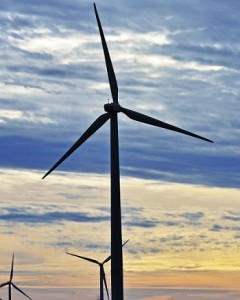Stealth technology comes to the wind energy space
September 16, 2014New technology may be put to use at a wind farm in France
A new kind of wind farm could soon be under construction in France. The wind farm is meant to serve as a demonstration for new wind turbine technology, which would create “stealth” turbines. Wind farms have often been criticized for their impact on ground radar systems. The blades of a turbine interfere with radar signals by returning them to their origin. As such, ground radar systems can sometimes confuse wind farms for aircraft and weather systems. Aircraft that fly over wind farms can also be made undetectable by the interference created by wind turbines.
Wind turbines have a problematic effect on ground radar systems
Modern radar systems can determine the difference between a wind turbine and other things, but older radar systems are still heavily used. In the U.S., some 10,000 megawatts worth of wind energy projects had been halted due to issues relating to older ground radar systems. Stealth turbines may be the solution to this problem. These turbines would not encounter any problematic issue with radar systems as they would be invisible to radar signals.
New technology to be put to use at the Ensemble Eolien Catalan wind farm in France
 The stealth technology is being put to use with wind turbines coming from Vestas. These turbines are located at the Ensemble Eolien Catalan wind farm in France. The stealth technology is similar to that used in various military applications. Vestas suggests that the use of this technology is a step forward for wind energy, but whether or not this technology can prove to be cost effective has yet to be seen.
The stealth technology is being put to use with wind turbines coming from Vestas. These turbines are located at the Ensemble Eolien Catalan wind farm in France. The stealth technology is similar to that used in various military applications. Vestas suggests that the use of this technology is a step forward for wind energy, but whether or not this technology can prove to be cost effective has yet to be seen.
Cost of new technology could affect the adoption of wind energy systems
Clean energy is already quite expensive. Building new renewable energy systems requires a sizable investment and most of these energy systems do not make use of cutting edge technology. Stealth technology may make wind energy systems significantly more expensive than they already are, which would reduce their viability as primary energy systems and affect their rate of adoption.

 With over 15 years of reporting hydrogen news, we are your premier source for the latest updates and insights in hydrogen and renewable energy.
With over 15 years of reporting hydrogen news, we are your premier source for the latest updates and insights in hydrogen and renewable energy.